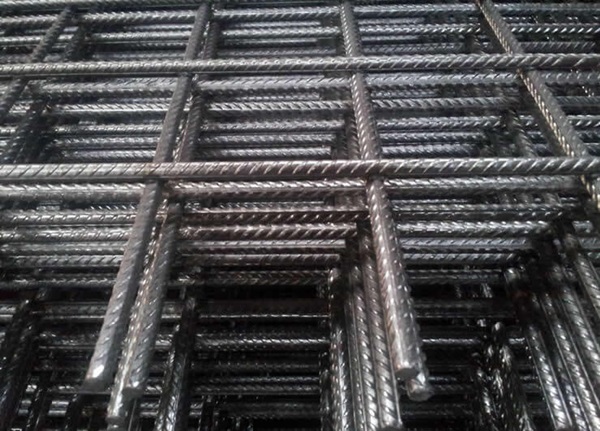Oct . 20, 2024 10:27 Back to list
iron wire mesh
The Versatility and Applications of Iron Wire Mesh
Iron wire mesh, a durable and versatile material, has become an essential element in various industrial and construction applications. Its strength, flexibility, and resistance to corrosion make it suitable for countless uses. This article explores the characteristics, benefits, and diverse applications of iron wire mesh, illuminating why it remains a popular choice in multiple sectors.
Characteristics of Iron Wire Mesh
Iron wire mesh is made from high-quality iron wires that are woven or welded together to form a grid-like structure. The mesh can vary in terms of wire diameter, spacing, and overall dimensions, allowing for customization based on specific requirements. One of the primary characteristics of iron wire mesh is its strength. The inherent properties of iron contribute to a robust framework that can withstand significant tensile stress.
Moreover, iron wire mesh can be treated to enhance its resistance to corrosion. Common treatments include galvanization, where a protective zinc coating is applied, and coating with various paints or polymers. These treatments expand the lifespan of the mesh and make it suitable for outdoor applications or in humid environments.
Benefits of Iron Wire Mesh
The benefits of iron wire mesh are manifold. First and foremost is its cost-effectiveness. Compared to other materials, iron wire mesh is relatively inexpensive, making it an attractive option for large-scale projects where budget constraints are a concern.
Additionally, the versatility of iron wire mesh allows it to be used in numerous applications
. It can be manufactured to fit specific sizes and needs, making it ideal for tailored projects in construction, manufacturing, and various other fields. Its ease of installation further enhances its appeal, as it can be quickly and efficiently set up in a variety of settings.Lastly, the durability of iron wire mesh contributes to its longevity. When properly maintained, iron wire mesh can last for decades, which ultimately leads to reduced replacement and maintenance costs over time.
iron wire mesh

Applications of Iron Wire Mesh
The applications of iron wire mesh are wide-ranging and diverse. In the construction industry, it is commonly used as reinforcement for concrete, providing additional strength to structures and preventing cracking. In fencing, iron wire mesh serves as an effective barrier for gardens, construction sites, and livestock areas. Its transparent nature allows visibility while ensuring security.
In the agricultural sector, iron wire mesh is essential for creating cages for poultry, protecting crops from pests, and controlling livestock. Its ability to withstand harsh weather conditions makes it a popular choice among farmers.
Iron wire mesh is also utilized in manufacturing processes, such as screening materials, filtration, and even in the production of electronics where precision and durability are required. For instance, in the mining industry, it is employed for separating materials and ensuring the efficiency of material processing.
In the realm of interior design, iron wire mesh has found its way into modern architecture. Designers incorporate it into partitions, railings, and even decorative elements, adding an industrial touch to stylish interiors.
Furthermore, iron wire mesh is a vital component in the production of various consumer goods. It can be found in products ranging from kitchen utensils to furniture, showcasing its versatility and adaptability across different markets.
Conclusion
Iron wire mesh stands out as a key material with a plethora of applications across various industries. Its strength, cost-effectiveness, durability, and versatility make it an invaluable asset in fields such as construction, agriculture, manufacturing, and design. As technologies evolve and new uses continue to emerge, iron wire mesh will undoubtedly maintain its significance, serving as a reliable solution for an assortment of needs. Whether for practical applications or innovative design, iron wire mesh remains a testament to the enduring qualities of basic yet essential materials in our lives.
-
Durable Hot-Dip Galvanized Farm Field Wire Fence | Farm Security
NewsAug.01,2025
-
Temporary Fencing Solutions-Anping County Xingzhi Metal Wiremesh Products Co.,Ltd
NewsJul.31,2025
-
Hop Dipped Galvanized / PVC Coated Temporary Fence - Anping County Xingzhi Metal Wiremesh Products Co., Ltd.|Durable Temporary Fencing&Cost-Effective Security Solutions
NewsJul.31,2025
-
Hop Dipped Galvanized / PVC Coated Temporary Fence-Anping County Xingzhi Metal Wiremesh Products Co., Ltd|durable temporary fencing&corrosion-resistant solutions
NewsJul.31,2025
-
Temporary Fencing Solutions - Anping County Xingzhi Metal | Galvanized PVC Coated Fences
NewsJul.31,2025
-
358 Anti-Climb Welded Wire Mesh Fence - High Security, Durable
NewsJul.31,2025



